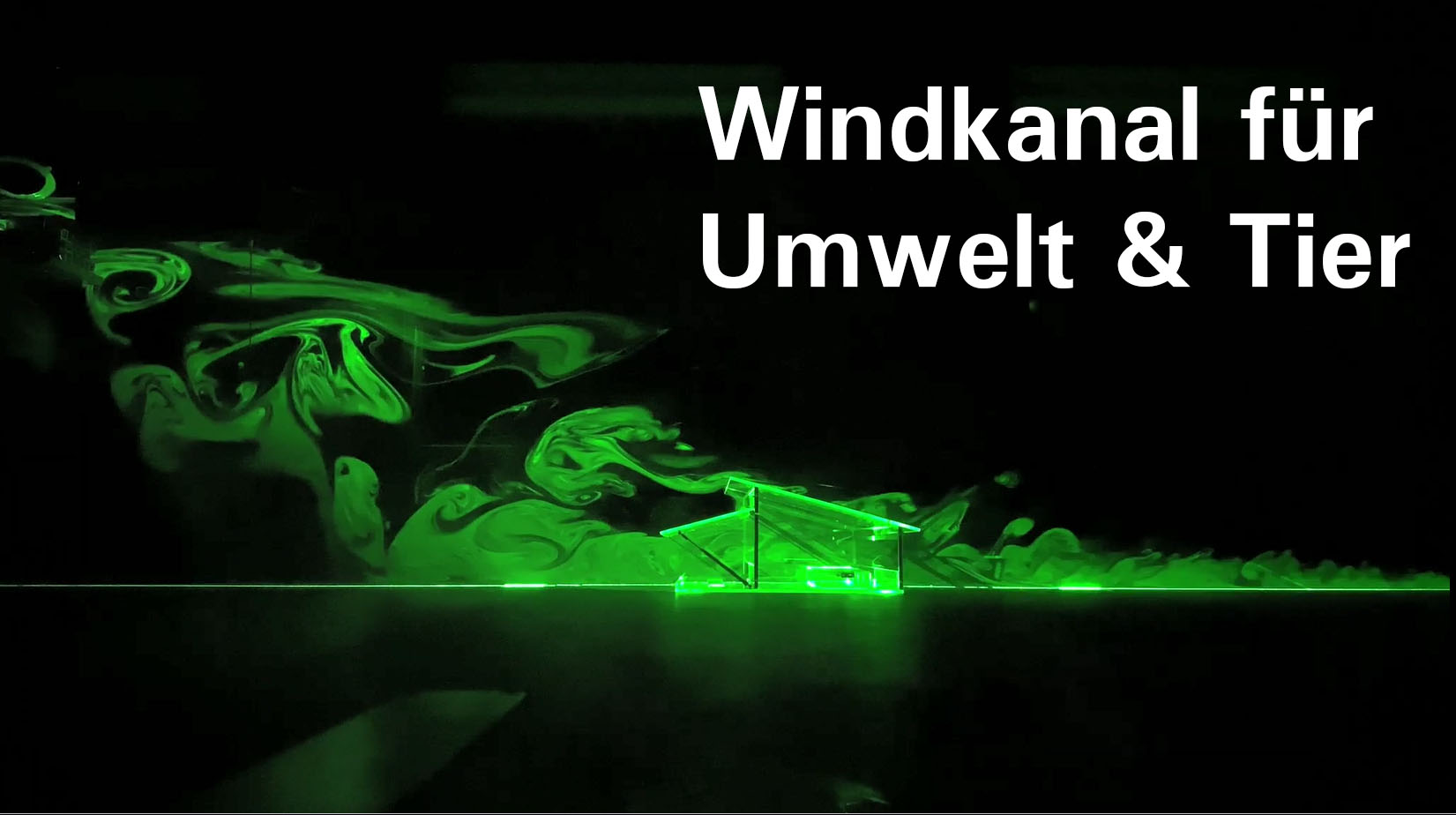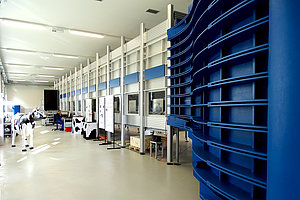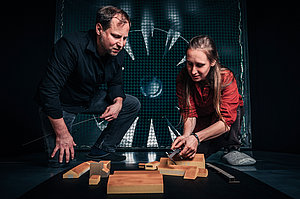The atmospheric boundary layer wind tunnel is used to investigate flow and dispersion processes around agricultural buildings as well as flow and ventilation processes within the buildings.
With a length of 18 metres, a height of 2.3 metres and a width of 3.0 metres, the tunnel is one of the largest wind tunnels used in agricultural science. Building models on a scale of 1:100 to 1:300 can be installed here.
Research
Wind tunnel investigations allow a systematic variation of the external boundary conditions. Complex aerodynamic processes in the near-ground layers of the atmosphere can be systematically investigated here.
A laser Doppler anemometer is used for velocity and turbulence measurements with high spatial and temporal resolution. In addition, a constant temperature anemometer and so-called Prandtl pressure probes are available. Turbulences and structures within the air stream can be visualized by means of laser light sections.
The data sets generated here are very well suited for the validation and further development of (numerical) dispersion models as well as for the completion of already existing data from field experiments. Data from nature can be supplemented by additional measurement sites, or additional information can be obtained by systematic variations of the external boundary conditions.
Dispersion analyses of tracer gas emissions are another important application area for the boundary layer wind tunnel. Under clearly defined laboratory conditions, emission sources and their flow-induced dispersion and dilution can be detected three-dimensionally in high temporal and spatial resolution using flame ionisation detectors (Fast-FIDs). Results are used to design structural and ventilation solutions that lead to a reduction of emissions at minimum energy consumption.
Possible applications in the agricultural sector:
- Development of structural and ventilation solutions for animal housing facilities to reduce the emission potential.
- Investigation of the dispersion of odours, gas and microorganisms from livestock housings and biogas plants as well as from manure storage for the development of air hygiene strategies in densely populated rural areas, also taking into account the topography.




